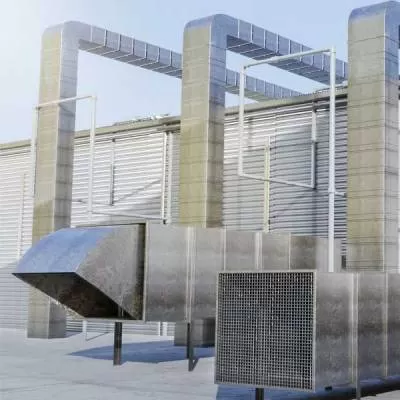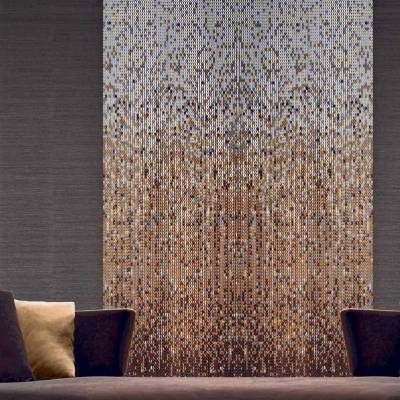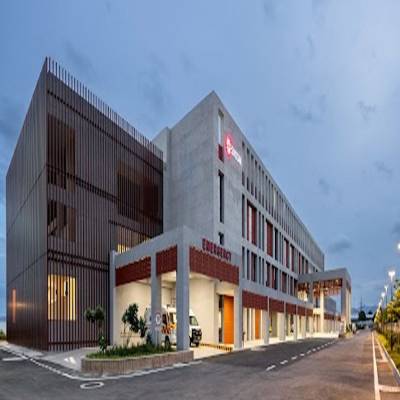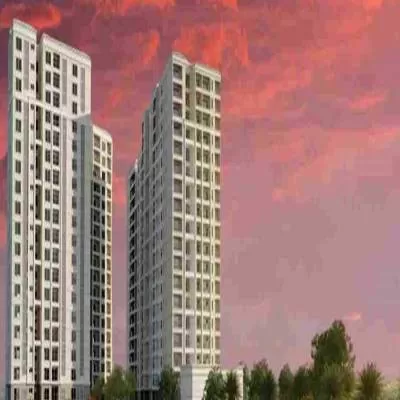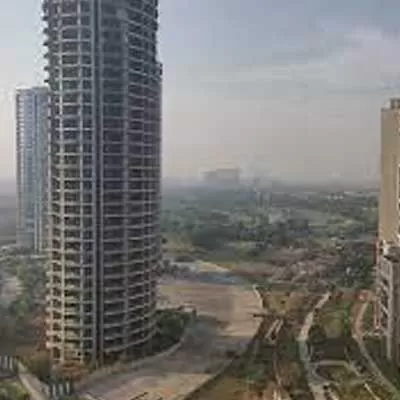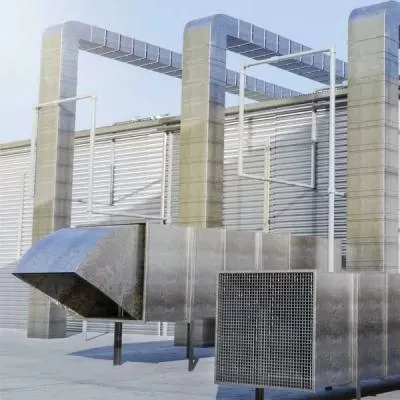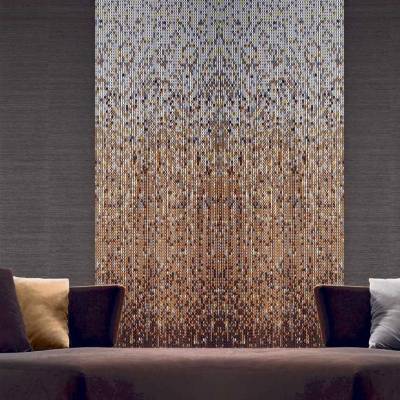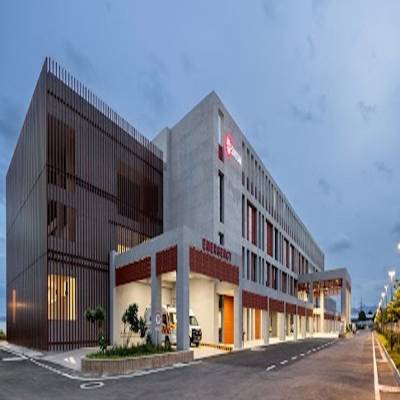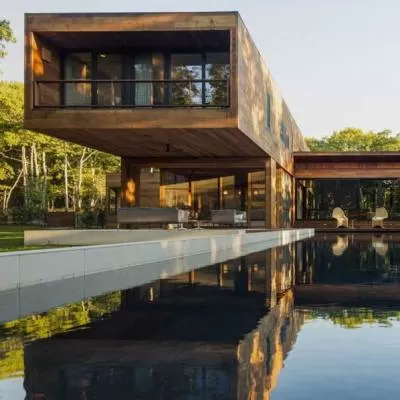- Home
- Real Estate
- HVAC Technologies

HVAC Technologies
Several Indian HVAC companies are expanding their production capacities with geographical expansion and investment in state-of-the-art machineries.
Sachin Maheshwari, National President, ISHRAE, says, 'The Indian HVAC market is estimated at Rs 20,000 crore ($3 billion).' And Takashi Nishikuma, Director Head-Living Environment Division, Mitsubishi Electric India, adds, 'Demand is expected to grow 10 per cent annually.' Maheshwari adds, 'The penetration rate of refrigeration and air-conditioning (RAC) in India is significantly lower at 4 per cent compared to 53 per cent in China, which offers huge growth opportunity.' This is attracting global players, evident in their sizeable investments, expansion of manufacturing facilities, distribution network and manpower.
For Arun Bhatia, Managing Director, Climate, Controls & Security, India Region, United Technologies, 'Variable refrigerant flow (VRF) air-conditioning is growing at a consistent speed.' He indicates a strong uptake for the company's VRF offerings in both high-end residential as well as commercial projects. 'We have seen some solid traction for our energy-efficient solutions in luxury condominiums kind of projects around the country,' he adds.
Overall, one-third of ACs are said to be derived from north, northwest and central India. Vipin Agrawal, Director-System AC, Samsung India Electronics, says, 'While Delhi is the largest market in the north, Hyderabad is largest in the south, followed by Chennai and Bengaluru.' Counting NCR along with Delhi in terms of witnessing maximum demand in the north, Nishikuma lists Maharashtra and Gujarat in the west.
New technologies
There has been a change from traditional HVAC to an energy-efficient and greener industry.
Maheshwari highlights latest energy efficient technologies: ' Variable refrigerant or water flow systems and variable air flow, driven with inverter drives, sensing actual load requirements.' While product efficiency norms are improving, energy recovery of heat transfer in the overall process is becoming common. 'New refrigerants are adopted with zero ozone depletion and low global warming potential,' he adds. What's more, several projects use BMS and automation to control, monitor and improve building performance.
Mitsubishi Electric India focuses on green products and technology of air-conditioning systems. Nishikuma names a few: 'Room air-conditioners, packaged air-conditioners, city multi-VRF systems, jet towel, hand dryers, etc.' The company recently launched an AC product under the MSZ-F series, designed for optimum cooling or heating performance and operational comfort.
HVAC technologies bring down carbon emissions as well. As Bhatia says, 'In our recently concluded 'Sustainabiz programme' at ACREX, Infosys shared their experience on its likeliness of becoming a carbon neutral company by 2018 with the use of right HVAC technology. In fact, from 2008 to now, they have brought down energy consumption from 200 kwh per person to 80 kwh.' Also, in Medanta Medicity Hospital project in Gurgaon, Carrier has helped saved 1 million power units in the past 11 months with a few interventions in the plant room.
Next, LG Electronics displayed its flagship commercial HVAC solution - the corrosion-resistant MULTI V IV - at Acrex 2016. Mahendra Prasad Agarwal, Vice President-System Air Conditioner, LG Electronics India Pvt Ltd, says, 'The VRF unit integrates sophisticated new technologies that effectively minimise energy loss under partial load conditions, giving it a superb coefficient of performance (COP) rating of 4.79.'
Well-suited for high-rise HVAC applications, the product has been designed for medium to large commercial facilities. LG's light commercial solutions deliver advanced seasonal energy-efficiency with their unique inverter technology.
Samsung India Electronics has developed the innovated 30-hp Super DVM S for large floor space. As Agrawal says, 'This VRF-based outdoor unit, in terms of capacity, is the world's largest. Combining four such units together, we can deliver 120 hp, which is about 100 tonne.' Also, boosting performance is the new super inverter scroll compressor with flash injection technology and an optimised bypass valve to increase capacity by 29 per cent. 'We have recently launched a product called 360 Cassette that provides a uniform air cooling experience,' he adds. Further, typically for large residential projects, the company has launched 14-hp front discharge outdoor units for VRF. Innovative features include the inverter scroll compressor and corrugate fin that improves performance by 20 per cent and increases air flow by 10 per cent compared to standard discharge VRF units. Also, this year, the company has launched a packaged product: A chiller with VRF called DVM Chiller, with capacity of 12, 16 and 20 tonne. Energy- efficient, the chiller packs immense power in a compact unit, and reduces annual utility costs by 36-50 per cent compared to conventional chillers.
Also, recently at Acrex 2016, Schneider Electric launched its first B2C product 'Under Floor Air Distribution System' (UFAD). Alberto Caporali, General Manager Access Floor, IT Business, Schneider Electric, says, 'Compared to traditional overhead systems, the UFAD saves more than 20 per cent energy.' He adds, 'The system uses the space between the structural concrete slab and the underside of a raised access floor to deliver conditioned air directly into the occupied zone of the building. This principle can be developed in different configurations.'
Make in India
Under the Make in India programme, companies have started manufacturing products indigenously. One such company is Mitsubishi Electric India. As Nishikuma says, 'For our other business activities, we are coming up with two factories at Bengaluru in the next two to three years.'
For its part, LG Electronics has already started manufacturing in India. 'We have started saving in dollar-denominated foreign exchange,' elaborates Agarwal. 'This exercise has given us a difference of over 15 per cent compared to imports.' Bhatia emphasises on how the company gradually moved from being from primarily focused on the residential segment to manufacturing light commercial products to developing a whole range of products for commercial applications. 'These products while truly global in nature, are made in India,' he emphasises.
Driving growth
HVAC is no longer considered a luxury but intrinsic to modern living. And, with signs of improvement in the economy, growth is expected to be faster.
Citing urbanisation and infra development as major growth drivers, Maheshwari says, 'Urbanisation is growing at over 30 per cent year-on-year, resulting in a real-estate boom with more construction of high-rise buildings, apartments, office spaces, retail stores, malls, etc. While this trend is now moving to Tier-II cities as well, new construction necessitates air-conditioning and ventilation. Also, the construction of metros, airports, ports, smart cities, healthcare, and hospitality are driving growth.' Bhatia emphasises on how the company gradually moved from being primarily focused on the residential segment to manufacturing light commercial products to developing a whole range of products for commercial applications. 'These products while truly global in nature, are made in India,' he emphasises. Meanwhile, Agrawal expects double-digit demand from these two markets put together. While demand for HVAC from the commercial segment is catching up fast, he sees sectors such as hospitality (demand from Tier-II and III cities), healthcare (growing demand from multi-speciality hospitals) and education leading from the front. Also, equipping residential heating and cooling systems with smart features will provide opportunities to service providers. Agarwal believes growth will depend on the progress of initiatives announced by the government. Terming it 'a vicious circle,' he says, 'If more industries come under the Make in India initiative, we will have more educational or training houses that will require HVACs; there will be more hotels, commercial structures, malls, engineering colleges with air- conditioned labs, and green structures that will drive demand for HVAC.'
The HVAC market has its share of challenges, such as poor availability and rising cost of electricity and growing cost of products in meeting energy and environment regulations. However, the emerging economy, with 17.5 per cent of the global population and just 3-4 per cent of the global HVAC market, is cause for optimism û and the industry knows it.
Demand from real estate
Shabbir Kanchwala, Senior Vice-President, K Raheja Corp, elaborates upon the importance of HVAC in building projects:
Residential and luxury projects: With air-conditioning constituting as much as 30 per cent of a building's energy consumption, future home owners should optimise energy usage from cooling systems by the use of HVAC, which will help reduce operating costs. While this may not make a substantial difference in the short term, long-term usage does see a significant decrease in costs, making it crucial to residential and luxury projects.
Commercial projects: Operating cost is a key area of concern, and for optimisation to make offices more cost-efficient, this is welcomed. Apart from reduced costs, intangible benefits include enhanced ventilation, better views and day lighting, and improved productivity of occupants. While costs incurred in the construction of a green Platinum-certified building are 10-15 per cent higher than a conventional building, reduced operation costs in the long run and the environmental impact over the years even out the cost of building green.
Affordable HVAC technologies: The payback period would be three to four years with a reduction in operational costs, making it affordable in the long term.
In projects: In K Raheja Corp's latest projects, warmed, cooled or dehumidified air flows through a series of ducts distributed across the house. A central HVAC system is noise-free and convenient. HVAC systems should consist of water-cooled screw chillers with a high coefficient of performance and eco-friendly refrigerant. AHUs, cooling towers, pumps and jet fans with variable frequency drives are modulated by centralised IBMS with installation variable air volumes inside designated areas. AHUs are interlinked with heat recovery units to reduce the cooling load on the chiller. For better indoor air quality, use of a demand-control ventilation system with CO2 sensors is a must.
Inverter air-conditioners
'The DC inverter units have a variable-frequency drive that comprises an adjustable electrical inverter to control the speed of the electromotor, which means the compressor and the cooling or heating output,' says Paras Sirohia, Managing Director, Cruise Appliances. 'The drive converts the incoming AC current to DC and then produces current of desired frequency through a modulation in an electrical inverter. A microcontroller can sample ambient air temperature and adjust the speed of the compressor accordingly. Inverter AC units have increased efficiency and their parts enjoy extended life while sharp fluctuations in the load are eliminated. This makes them quieter, with lower operating cost and less breakdowns.'
Considering the soaring temperatures, Cruise has recently launched the VarioQool Series, the premium line of new generation Inverter ACs with BEE star rating, namely VQ3 and VQ5. 'These ACs adjust cooling capacity in response to common yet important conditions of difference between outside and inside air temperatures and the number of people present, allowing them to run more efficiently while reducing energy costs by up to 50 per cent,' says Sirohia.
- SHRIYAL SETHUMADHAVAN (With additional inputs from RAHUL KAMAT)
To share your views on the HVAC market in India, write in at feedback@constructionworld.in
- HVAC
- Machineries
- Sachin Maheshwari
- Investment
- water flow systems
- MSZ-F series
- Sustainabiz programme
- ACREX
- Infosys
- Medanta Medicity Hospital project
- Mahendra Prasad Agarwal
- Alberto Caporali
- Schneider Electric
- Make in India
- LG Electronics
- Construction
- Shabbir Kanchwala
- K Raheja Corp
- DC inverter
- SHRIYAL SETHUMADHAVAN
- RAHUL KAMAT
The Indian HVAC market is growing at a much faster pace compared to the global HVAC market. Several Indian HVAC companies are expanding their production capacities with geographical expansion and investment in state-of-the-art machineries. Sachin Maheshwari, National President, ISHRAE, says, 'The Indian HVAC market is estimated at Rs 20,000 crore ($3 billion).' And Takashi Nishikuma, Director Head-Living Environment Division, Mitsubishi Electric India, adds, 'Demand is expected to grow 10 per cent annually.' Maheshwari adds, 'The penetration rate of refrigeration and air-conditioning (RAC) in India is significantly lower at 4 per cent compared to 53 per cent in China, which offers huge growth opportunity.' This is attracting global players, evident in their sizeable investments, expansion of manufacturing facilities, distribution network and manpower. For Arun Bhatia, Managing Director, Climate, Controls & Security, India Region, United Technologies, 'Variable refrigerant flow (VRF) air-conditioning is growing at a consistent speed.' He indicates a strong uptake for the company's VRF offerings in both high-end residential as well as commercial projects. 'We have seen some solid traction for our energy-efficient solutions in luxury condominiums kind of projects around the country,' he adds. Overall, one-third of ACs are said to be derived from north, northwest and central India. Vipin Agrawal, Director-System AC, Samsung India Electronics, says, 'While Delhi is the largest market in the north, Hyderabad is largest in the south, followed by Chennai and Bengaluru.' Counting NCR along with Delhi in terms of witnessing maximum demand in the north, Nishikuma lists Maharashtra and Gujarat in the west. New technologies There has been a change from traditional HVAC to an energy-efficient and greener industry. Maheshwari highlights latest energy efficient technologies: ' Variable refrigerant or water flow systems and variable air flow, driven with inverter drives, sensing actual load requirements.' While product efficiency norms are improving, energy recovery of heat transfer in the overall process is becoming common. 'New refrigerants are adopted with zero ozone depletion and low global warming potential,' he adds. What's more, several projects use BMS and automation to control, monitor and improve building performance. Mitsubishi Electric India focuses on green products and technology of air-conditioning systems. Nishikuma names a few: 'Room air-conditioners, packaged air-conditioners, city multi-VRF systems, jet towel, hand dryers, etc.' The company recently launched an AC product under the MSZ-F series, designed for optimum cooling or heating performance and operational comfort. HVAC technologies bring down carbon emissions as well. As Bhatia says, 'In our recently concluded 'Sustainabiz programme' at ACREX, Infosys shared their experience on its likeliness of becoming a carbon neutral company by 2018 with the use of right HVAC technology. In fact, from 2008 to now, they have brought down energy consumption from 200 kwh per person to 80 kwh.' Also, in Medanta Medicity Hospital project in Gurgaon, Carrier has helped saved 1 million power units in the past 11 months with a few interventions in the plant room. Next, LG Electronics displayed its flagship commercial HVAC solution - the corrosion-resistant MULTI V IV - at Acrex 2016. Mahendra Prasad Agarwal, Vice President-System Air Conditioner, LG Electronics India Pvt Ltd, says, 'The VRF unit integrates sophisticated new technologies that effectively minimise energy loss under partial load conditions, giving it a superb coefficient of performance (COP) rating of 4.79.' Well-suited for high-rise HVAC applications, the product has been designed for medium to large commercial facilities. LG's light commercial solutions deliver advanced seasonal energy-efficiency with their unique inverter technology. Samsung India Electronics has developed the innovated 30-hp Super DVM S for large floor space. As Agrawal says, 'This VRF-based outdoor unit, in terms of capacity, is the world's largest. Combining four such units together, we can deliver 120 hp, which is about 100 tonne.' Also, boosting performance is the new super inverter scroll compressor with flash injection technology and an optimised bypass valve to increase capacity by 29 per cent. 'We have recently launched a product called 360 Cassette that provides a uniform air cooling experience,' he adds. Further, typically for large residential projects, the company has launched 14-hp front discharge outdoor units for VRF. Innovative features include the inverter scroll compressor and corrugate fin that improves performance by 20 per cent and increases air flow by 10 per cent compared to standard discharge VRF units. Also, this year, the company has launched a packaged product: A chiller with VRF called DVM Chiller, with capacity of 12, 16 and 20 tonne. Energy- efficient, the chiller packs immense power in a compact unit, and reduces annual utility costs by 36-50 per cent compared to conventional chillers. Also, recently at Acrex 2016, Schneider Electric launched its first B2C product 'Under Floor Air Distribution System' (UFAD). Alberto Caporali, General Manager Access Floor, IT Business, Schneider Electric, says, 'Compared to traditional overhead systems, the UFAD saves more than 20 per cent energy.' He adds, 'The system uses the space between the structural concrete slab and the underside of a raised access floor to deliver conditioned air directly into the occupied zone of the building. This principle can be developed in different configurations.' Make in India Under the Make in India programme, companies have started manufacturing products indigenously. One such company is Mitsubishi Electric India. As Nishikuma says, 'For our other business activities, we are coming up with two factories at Bengaluru in the next two to three years.' For its part, LG Electronics has already started manufacturing in India. 'We have started saving in dollar-denominated foreign exchange,' elaborates Agarwal. 'This exercise has given us a difference of over 15 per cent compared to imports.' Bhatia emphasises on how the company gradually moved from being from primarily focused on the residential segment to manufacturing light commercial products to developing a whole range of products for commercial applications. 'These products while truly global in nature, are made in India,' he emphasises. Driving growth HVAC is no longer considered a luxury but intrinsic to modern living. And, with signs of improvement in the economy, growth is expected to be faster. Citing urbanisation and infra development as major growth drivers, Maheshwari says, 'Urbanisation is growing at over 30 per cent year-on-year, resulting in a real-estate boom with more construction of high-rise buildings, apartments, office spaces, retail stores, malls, etc. While this trend is now moving to Tier-II cities as well, new construction necessitates air-conditioning and ventilation. Also, the construction of metros, airports, ports, smart cities, healthcare, and hospitality are driving growth.' Bhatia emphasises on how the company gradually moved from being primarily focused on the residential segment to manufacturing light commercial products to developing a whole range of products for commercial applications. 'These products while truly global in nature, are made in India,' he emphasises. Meanwhile, Agrawal expects double-digit demand from these two markets put together. While demand for HVAC from the commercial segment is catching up fast, he sees sectors such as hospitality (demand from Tier-II and III cities), healthcare (growing demand from multi-speciality hospitals) and education leading from the front. Also, equipping residential heating and cooling systems with smart features will provide opportunities to service providers. Agarwal believes growth will depend on the progress of initiatives announced by the government. Terming it 'a vicious circle,' he says, 'If more industries come under the Make in India initiative, we will have more educational or training houses that will require HVACs; there will be more hotels, commercial structures, malls, engineering colleges with air- conditioned labs, and green structures that will drive demand for HVAC.' The HVAC market has its share of challenges, such as poor availability and rising cost of electricity and growing cost of products in meeting energy and environment regulations. However, the emerging economy, with 17.5 per cent of the global population and just 3-4 per cent of the global HVAC market, is cause for optimism û and the industry knows it. Demand from real estate Shabbir Kanchwala, Senior Vice-President, K Raheja Corp, elaborates upon the importance of HVAC in building projects: Residential and luxury projects: With air-conditioning constituting as much as 30 per cent of a building's energy consumption, future home owners should optimise energy usage from cooling systems by the use of HVAC, which will help reduce operating costs. While this may not make a substantial difference in the short term, long-term usage does see a significant decrease in costs, making it crucial to residential and luxury projects. Commercial projects: Operating cost is a key area of concern, and for optimisation to make offices more cost-efficient, this is welcomed. Apart from reduced costs, intangible benefits include enhanced ventilation, better views and day lighting, and improved productivity of occupants. While costs incurred in the construction of a green Platinum-certified building are 10-15 per cent higher than a conventional building, reduced operation costs in the long run and the environmental impact over the years even out the cost of building green. Affordable HVAC technologies: The payback period would be three to four years with a reduction in operational costs, making it affordable in the long term. In projects: In K Raheja Corp's latest projects, warmed, cooled or dehumidified air flows through a series of ducts distributed across the house. A central HVAC system is noise-free and convenient. HVAC systems should consist of water-cooled screw chillers with a high coefficient of performance and eco-friendly refrigerant. AHUs, cooling towers, pumps and jet fans with variable frequency drives are modulated by centralised IBMS with installation variable air volumes inside designated areas. AHUs are interlinked with heat recovery units to reduce the cooling load on the chiller. For better indoor air quality, use of a demand-control ventilation system with CO2 sensors is a must. Inverter air-conditioners 'The DC inverter units have a variable-frequency drive that comprises an adjustable electrical inverter to control the speed of the electromotor, which means the compressor and the cooling or heating output,' says Paras Sirohia, Managing Director, Cruise Appliances. 'The drive converts the incoming AC current to DC and then produces current of desired frequency through a modulation in an electrical inverter. A microcontroller can sample ambient air temperature and adjust the speed of the compressor accordingly. Inverter AC units have increased efficiency and their parts enjoy extended life while sharp fluctuations in the load are eliminated. This makes them quieter, with lower operating cost and less breakdowns.' Considering the soaring temperatures, Cruise has recently launched the VarioQool Series, the premium line of new generation Inverter ACs with BEE star rating, namely VQ3 and VQ5. 'These ACs adjust cooling capacity in response to common yet important conditions of difference between outside and inside air temperatures and the number of people present, allowing them to run more efficiently while reducing energy costs by up to 50 per cent,' says Sirohia. - SHRIYAL SETHUMADHAVAN (With additional inputs from RAHUL KAMAT) To share your views on the HVAC market in India, write in at feedback@constructionworld.in


